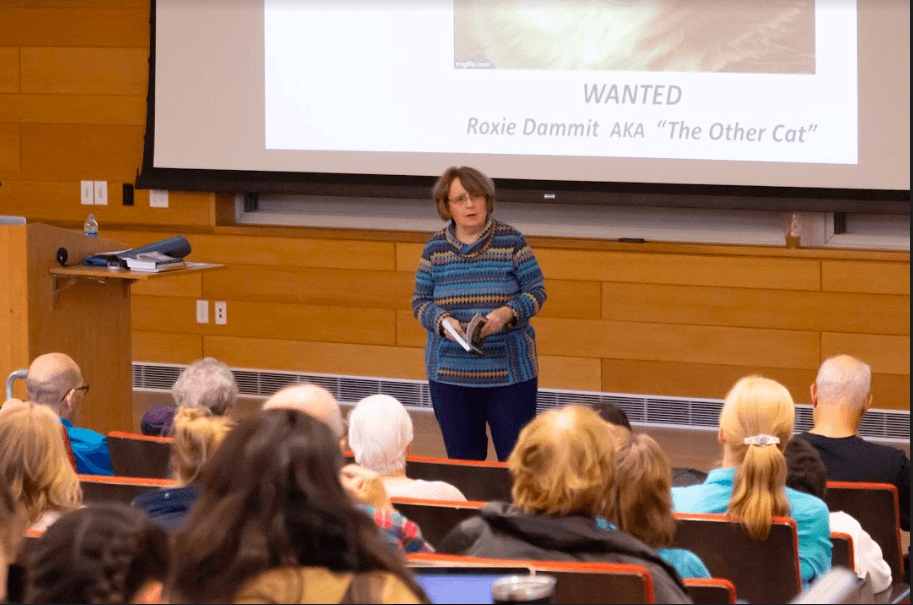Writer Claremary P. Sweeney discusses how she writes about crime at this year’s forensic science seminar. Photo by James McIntosh.
A local murder mystery writer, who has written four novels set in Rhode Island, spoke at this week’s forensic science seminar and discussed how she goes about writing her novels.
The seminar, titled “Inside the Devious Mind of a Murder Mystery Writer,” was given by Claremary P. Sweeney on Friday. Sweeney shared information about how she writes her novels and shared personal stories of her experiences with crime.
Sweeney was an English teacher in Pawtucket, Rhode Island before she started to write novels. However, Sweeney remembered always loving mystery novels and television shows from a young age.
“My own introduction to mysteries started at a young age when I would watch Perry Mason with my mom on Saturday nights,” Sweeney said. “Then there were the younger sleuths, Nancy Drew and the Hardy Boys. I then moved onto Agatha Christie and over the years have become well-read in the mystery genre.”
It is important to Sweeney that her novels are not only interesting to her readers but also plausible. Sweeney does extensive research before her books are published. This is done to ensure that every detail is as real as possible.
Sweeney’s second novel, “Last Rose on the Vine,” takes place at the University of Rhode Island. While writing the novel, Sweeney talked to the campus’ head of security about protocols, the pharmacy department about poisons and the forensic lab about forensic testing.
“There are those fiction authors who don’t care about the underlying plausibility in the details of their plots,” Sweeney said. “Traditionally, writers have been given poetic license and they have their imaginations and that is good enough for some of them. But some authors want an element of truth running through their plots.”
Although the research that goes into her novels is important to her, Sweeney also puts a lot of work into the plots of her books. Sweeney admitted that she has a bit of an odd approach to writing her novels.
“When I begin writing I have a concept of what the story will be, but I allow my characters and the dialogue to take me through to the conclusion,” said Sweeney. “I have decided who the victim will be and how they will meet their end, but like my readers, I never know who the killer is until I develop my characters.”
This approach allows her to write a novel that she feels comes to a satisfying conclusion.
Sweeney’s fourth novel, “Last Sermon for a Sinner,” was inspired by a murder in which she knew the indivudal who committed the murder.
In 1975, Michael Woodmansee murdered Jason Foreman, a 5-year-old who lived near Woodmansee. Foreman was reported missing for eight years before Woodmansee admitted that he had murdered him. Sweeney had personally known Woodmansee from a theater group.
This event stuck with Sweeney and she always hoped to write about it. However, when it came to actually write the novel, she could never bring herself to do so. Because of this, she wrote “Last Sermon” for a Sinner.
Instead of delving into the case, she wrote about the feelings that flowed through the case, especially the loss of a child.
“Although I kept all the newspapers from the case, I could never bring myself to write that story,” Sweeney said. “‘Last Sermon’ is about family, about the importance of children in our lives, and the responsibility we have to protect them. The story is about what the death of a child does to a community as a whole.”
For anyone interested in learning more about Sweeney and her novels, you can learn more at https://claremarypsweeney.carrd.co/.





